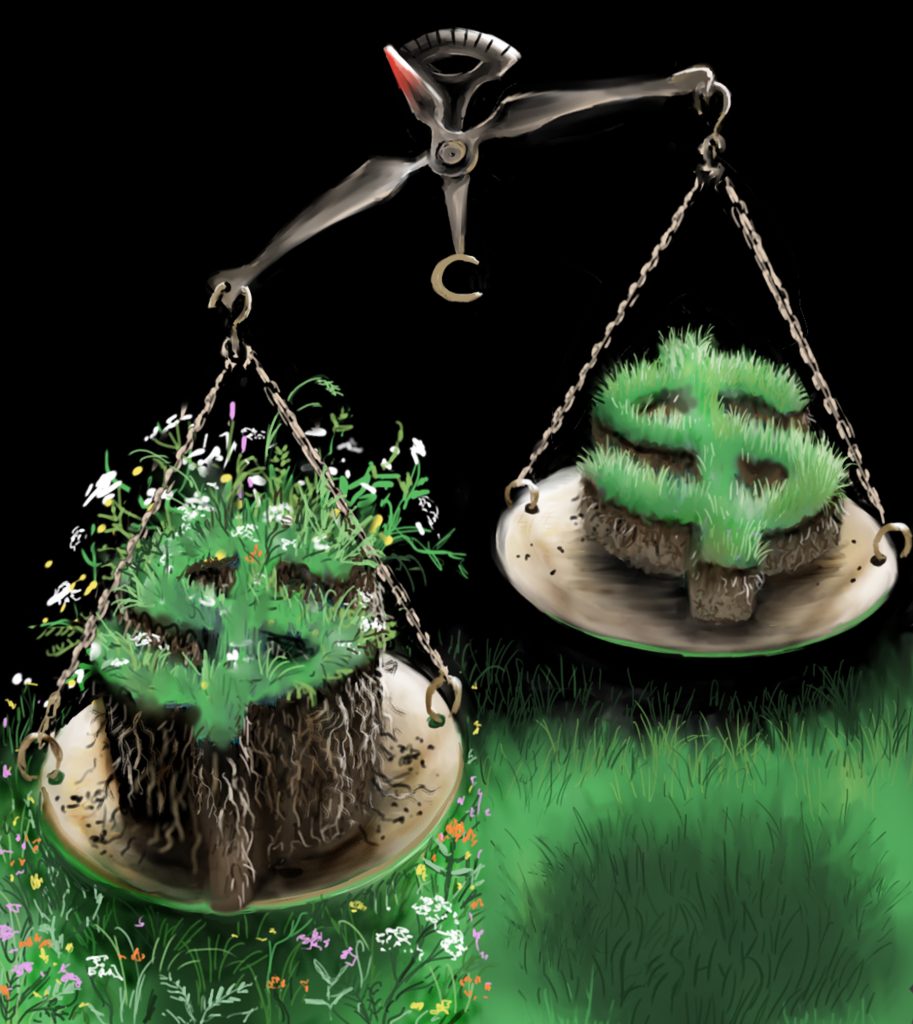Wildflowers splashed across a meadow in different sizes, shapes and colors offer more than just beauty. The natural mix of plant species in an ecosystem—its biodiversity—helps it grow faster and cycle nutrients more efficiently. These ecosystem functions also deliver life-sustaining services on which humans rely, such as purifying water and providing food, fuel and oxygen.
Biodiversity is declining around the world due to a variety of causes, including changes in land use, pollution and climate change, so it is more important than ever that land managers and other policymakers are better informed when making decisions that affect biodiversity in their regions.
But how do you measure the value of biodiversity? Northern Arizona University ecologist and Regents’ Professor Bruce Hungate led a team of scientists who developed one of the first models to assign a dollar value to the loss or gain of species in an ecosystem. The team’s findings, recently published in Science Advances, offer both an economic argument for preserving biodiversity and a practical tool for land managers.
“Biodiversity is valuable, but it’s hard to tell how valuable in monetary terms,” said Hungate, director of NAU’s Center for Ecosystem Science and Society.
To build the model, the researchers had to identify some measurable service of biodiversity that society has already priced, so they turned to the carbon capture and storage market. Concern about climate change has produced a $175 billion global market for activities that remove carbon from the atmosphere.
“We tackled the problem by blending models of carbon cycling and economic valuation to make explicit, quantitative estimates about the marginal value of species richness for carbon storage, one of the many ways species in nature provide value to people,” Hungate said.

Credit: David Hooper
The scientists theorized plant biodiversity could be considered a carbon storage “provider” through the process of photosynthesis, a 4-billion-year-old form of carbon storage. Plants “breathe in” carbon dioxide for energy and growth, store the carbon in their body tissues and transfer it to the soil through decay. The key is to link biodiversity and carbon storage in a quantitative way, so researchers asked whether changing the number of plant species in an ecosystem affects the amount of carbon it stores over time.
They analyzed data from two 10-year experiments in Minnesota grasslands that measured how plant and soil carbon changed with the number of plant species in a plot. Modeling results over 50 years, they estimated the “marginal” increase in carbon storage to determine how much additional carbon is stored for every species added to the mix.
Each additional species in a grassland plot increased the plot’s overall carbon storage, on average. One reason for this gain may be that new species can fill new niches, yielding more overall growth.
With more species, however, came diminishing returns in cumulative carbon storage. A change from five to six species stored almost 10 times more carbon than a change from 15 to 16 species, showing the biggest benefit came in the least diverse plots.
At small scales, such as one hectare, going from one to two plant species over a 50-year time period would store an additional 9.1 metric tons of carbon, potentially saving $804.55 per hectare based on a mid-range estimate of the social cost of carbon. At larger scales, cost savings could hypothetically be significant. For example, adding just one species to the 12.3 million hectares of cultivated lands restored to grasslands by the U.S. Department of Agriculture’s Conservation Reserve Program could save more than $700 million.
While the value of biodiversity is larger and more complex than just one economic measure, this new tool explores the dollar value of what is lost or gained with changes in biodiversity. In grasslands, specifically, it suggests the biggest cost savings from carbon storage will come from restoring the most degraded, species-poor lands, and from introducing more diverse seed mixes.
Hear Hungate discuss his research in a recent podcast.



